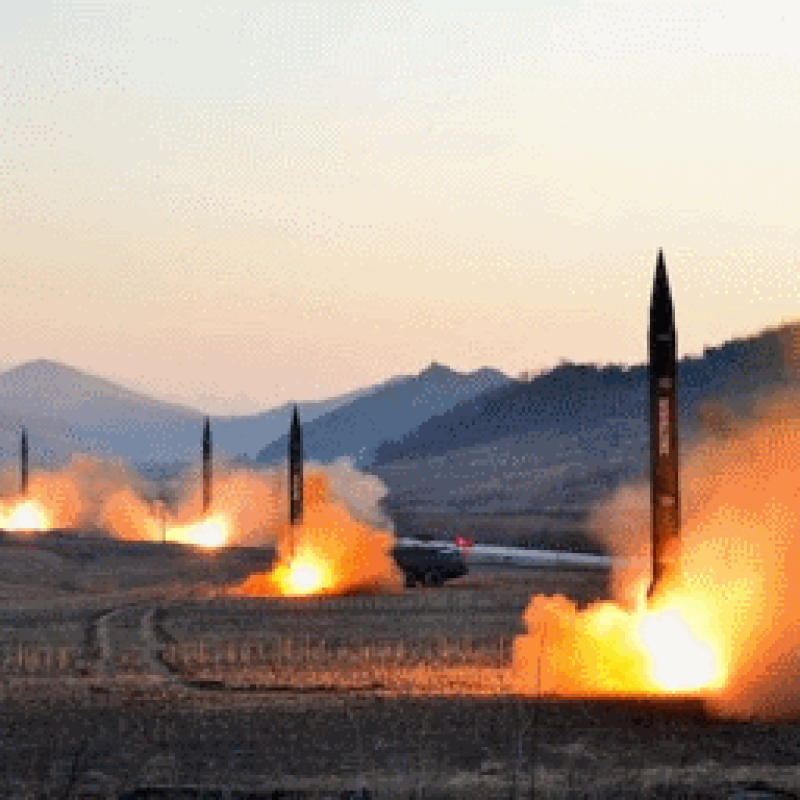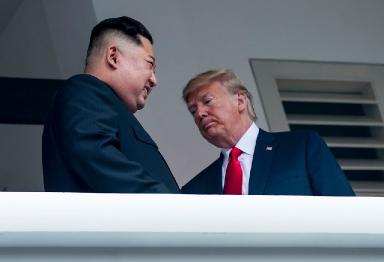Once ‘No Longer a Nuclear Threat,’ North Korea Now in Standoff With U.S.


North Korea is insisting that the United States declare that the Korean War is over before providing a detailed, written disclosure of all its atomic weapons stockpiles, its nuclear production facilities and its missiles as a first major step toward denuclearization.
Two months after President Trump declared his summit meeting in Singapore with Kim Jong-un a complete success, North Korea has not yet even agreed to provide that list during private exchanges with Secretary of State Mike Pompeo, according to American and South Korean officials familiar with the talks.

Doug Mills/The New York Times
Mr. Pompeo maintains progress is being made, although he has provided no details. But John R. Bolton, Mr. Trump’s national security adviser, this week said, “North Korea that has not taken the steps we feel are necessary to denuclearize.”
On Thursday, North Korea’s state-run newspaper, Rodong Sinmun, called the declaration of the end of the war “the demand of our time” and that would be the “first process” in moving toward a fulfillment of the June 12 deal struck between Mr. Trump and Mr. Kim. Pyonygang also wants peace treaty talks to begin before detailing its arsenal.
If the standoff over the parallel declarations remains, it is hard to see how the two countries can move forward with an agreement.
“The North Koreans have lied to us consistently for nearly 30 years,” Joseph Nye, who wrote one of the National Intelligence Council’s first assessments of the North’s weapons programs in 1993, said at the Aspen Institute on Tuesday.
“Trump is in a long tradition of American presidents who have been taken to the cleaners,” Mr. Nye said.
Neither Mr. Trump nor Mr. Pompeo has acknowledged the impasse. But officials said South Korea has quietly backed the North Korean position, betting that once Mr. Trump has issued a “peace declaration” it would be harder for him to later threaten military action if the North fails to disarm or discard its nuclear arsenal.
Against North Korea’s continuing nuclear buildup — and its threats to strike the United States — Washington has long refused to formally declare the end of the war, which was halted with a 1953 armistice but never officially brought to a close.
And fears remain that making concessions to Pyongyang — especially after Mr. Trump shelved annual American military exercises with South Korea that he called “war games,’’ the phrase used by the North — would outrage Republicans in Congress and open Mr. Trump to charges that he has been outmaneuvered by the North Korean leader.
The White House has never reconciled Mr. Trump’s post on Twitter after meeting Mr. Kim that “there is no longer a Nuclear Threat from North Korea” with Mr. Bolton’s assessment that the Singapore agreement has so far yielded almost no progress in the nuclear arena. That view is shared by many in Congress and the American intelligence agencies.
For Mr. Trump and Mr. Pompeo, much rides on how this standoff is resolved — or whether it results in the collapse of what the president called his determination to “solve” the nuclear crisis.
Mr. Pompeo has told associates that he believes his tenure as secretary of state will be judged largely on how he handles the negotiations. In recent weeks he has softened some of his statements toward North Korea, saying the United States is open to a step-by-step approach that most officials had previously rejected.
“ The ultimate timeline for denuclearization will be set by Chairman Kim ,” Mr. Pompeo said last week — a stark contrast to Mr. Trump’s statements last year that North Korea should give up its weapons rapidly, or face tremendous, if unspecified, consequences.
Challenged about the lack of progress so far, officials at the White House and State Department pointed to three developments as signs that the strategy with North Korea is advancing.
They noted that North Korea has not conducted a missile or nuclear test since November. Since the Singapore summit, Pyongyang has returned the remains of about 55 Americans killed in the Korean War, which appear genuine, a good-will gesture though one unrelated to the nuclear program. And satellite evidence suggests North Korea has begun dismantling a test site where it has developed missile technologies and launched space satellite missions.
Experts cautioned, however, that all the steps taken so far are easily reversible, much as North Korea rebuilt a nuclear reactor after blowing up its cooling tower on television at the end of the George W. Bush administration.
“I had low expectations about Singapore, which have been more than met,” said Christopher Hill, who negotiated the accord that resulted in the blowing up of the reactor cooling tower. He noted that the agreement that Mr. Trump struck with Mr. Kim did not go beyond commitments the North had made to Presidents Clinton and Bush.
But Mr. Trump has retained his enthusiastic tone, apparently convinced he can persuade Mr. Kim to give up his weapons as long as the personal line remains open between the two leaders.
Mr. Pompeo has begun talking about keeping up sanctions pressure. But Mr. Trump has said little about his earlier promises of “maximum pressure’’ against Pyongyang , recently shifting his sanctions threats for Iran — which, unlike North Korea, has no nuclear weapons.
North Korea is continuing to advance its nuclear and missile capability, although in less dramatic and visible ways than last year’s missile tests. Over the past two months, the North has expanded several significant programs critical to its continued production of nuclear material and the expansion of its nuclear stockpile.
While there is no agreement on how many nuclear weapons North Korea now owns, the C.I.A.’s official estimate of around 20, issued when Mr. Trump came to office, is creeping up, officials said. The current estimates are closer to 40.
The Defense Intelligence Agency uses a larger figure of 60, but that assumes highly efficient production capabilities, which many experts doubt.
The wide variance in weapons estimates underscores the problem of knowing whether North Korea is actually giving up its arsenal. The declared listing of its current stockpiles and production facilities is meant as a critical first step, so that American intelligence agencies can compare it to their findings, and then challenge the North Koreans if they have not revealed suspected sites.
But the North Koreans have many reasons to balk at providing the declaration. They fear that once they identify locations of key facilities, the United States will use that information to target any pre-emptive strikes in the future. And they also fear that the declaration will put them on a pathway to giving everything up — or being charged with lying about the true scope of their program.
Some parts of that program are hard to hide. Analysts who study satellite images say the North is firing up a large new reactor — its second at Yongbyon, its top nuclear site. Such reactors make plutonium, a main fuel of nuclear arms. The new reactor, analysts say, can make four times more than the North’s existing large reactor, which long supplied plutonium for its nuclear arsenal.
Last month in Senate testimony, Mr. Pompeo acknowledged that North Korea’s plants “continue to produce fissile material,” the technical term for the fuel at the core of nuclear warheads.
Separately, American intelligence officials have found that the North is continuing to make long-range missiles at a sprawling manufacturing site just north of Pyongyang, according to news reports. Analysts who study satellite imagery say they see daily activity at the plant consistent with missile production.
Arms control experts say such work is unsurprising since North Korea has committed itself to few particular denuclearization steps. Stopping activity unilaterally, the experts say, would undermine its leverage in any coming arms negotiations.
Some links in the OA have not been reproduced here.
Tags







